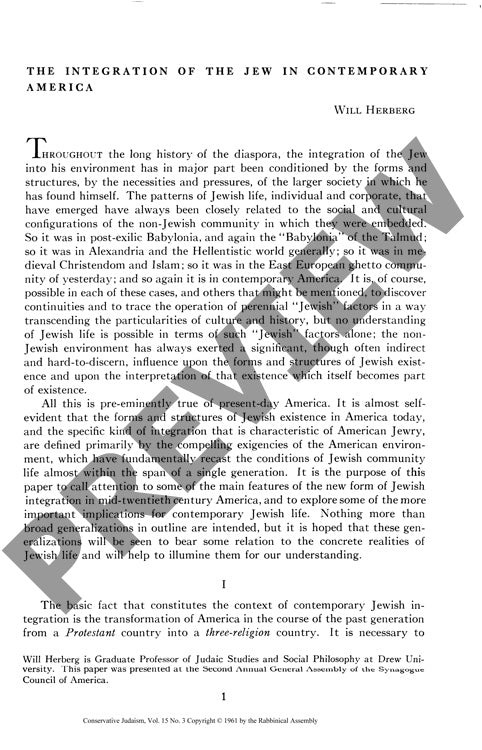The Intergration of the Jew in Contempor
Couldn't load pickup availability
America's transformation from a Protestant nation to a tripartite religious society has fundamentally reshaped Jewish integration in mid-twentieth century America. Through sociological analysis of demographic patterns and cultural shifts, a distinctive pattern emerges: American Jews have achieved unprecedented social integration while maintaining their communal identity, primarily by redefining Jewishness in religious rather than ethnic terms. Historical comparison across diaspora communities and examination of generational patterns, particularly the three-generation model of immigrant adaptation, reveals how America's evolution into a "three-religion country" (Protestant-Catholic-Jewish) enabled Jews to achieve full American citizenship through, rather than despite, their religious identity. Third-generation American Jews have elevated the synagogue's centrality in community life and established Judaism as one of three legitimate "American" religious expressions. Yet this successful integration pattern has produced unexpected consequences, including the paradoxical emergence of "religiousness without religion" and potential erosion of Jewish distinctiveness through excessive cultural accommodation. While this integration model offers unprecedented opportunities for Jewish community development in America, it presents fundamental challenges regarding authentic religious commitment and the preservation of Jewish transcendence within American society. These findings illuminate broader patterns of religious minority integration in pluralistic democratic societies and highlight the complex relationship between assimilation and cultural preservation.

More Information
-
Physical Description
-
Publication Information
Published 1961
ISBN
-
Publication Credits
Will Herberg

